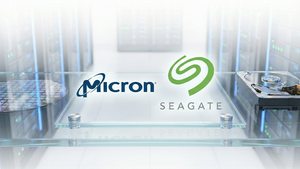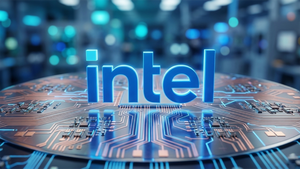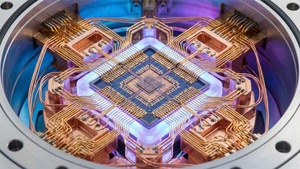
The race to power the artificial intelligence revolution is intensifying, pushing the boundaries of both computational might and energy efficiency. At the forefront of this monumental shift are industry titans like Advanced Micro Devices (NASDAQ: AMD) and innovative power semiconductor specialists such as Navitas Semiconductor (NASDAQ: NVTS). While often discussed in the context of the burgeoning high-power AI chip market, their roles are distinct yet profoundly interconnected. AMD is aggressively expanding its portfolio of AI-enabled processors and GPUs, delivering the raw computational horsepower needed for advanced AI training and inference. Concurrently, Navitas Semiconductor is revolutionizing the very foundation of AI infrastructure by providing the Gallium Nitride (GaN) and Silicon Carbide (SiC) technologies essential for efficient and compact power delivery to these energy-hungry AI systems. This dynamic interplay defines a new era where specialized innovations across the hardware stack are critical for unleashing AI's full potential.
The Dual Engines of AI Advancement: Compute and Power
AMD's strategy in the high-power AI sector is centered on delivering cutting-edge AI accelerators that can handle the most demanding workloads. As of November 2025, the company has rolled out its formidable Ryzen AI Max series processors for PCs, featuring up to 16 Zen 5 CPU cores and an XDNA 2 Neural Processing Unit (NPU) capable of 50 TOPS (Tera Operations Per Second). These chips are designed to bring high-performance AI directly to the desktop, facilitating Microsoft's Copilot+ experiences and other on-device AI applications. For the data center, AMD's Instinct MI350 series GPUs, shipping in Q3 2025, represent a significant leap. Built on the CDNA 4 architecture and 3nm process technology, these GPUs integrate 185 billion transistors, offering up to a 4x generation-on-generation AI compute improvement and a staggering 35x leap in inferencing performance. With 288GB of HBM3E memory, they can support models with up to 520 billion parameters on a single GPU. Looking ahead, the Instinct MI400 series, including the MI430X with 432GB of HBM4 memory, is slated for 2026, promising even greater compute density and scalability. AMD's commitment to an open ecosystem, exemplified by its ROCm software platform and a major partnership with OpenAI for future GPU deployments, underscores its ambition to be a dominant force in AI compute.
Navitas Semiconductor, on the other hand, is tackling the equally critical challenge of power efficiency. As AI data centers proliferate and demand exponentially more energy, the ability to deliver power cleanly and efficiently becomes paramount. Navitas specializes in GaN and SiC power semiconductors, which offer superior switching speeds and lower energy losses compared to traditional silicon. In May 2025, Navitas launched an industry-leading 12kW GaN & SiC platform specifically for hyperscale AI data centers, boasting 97.8% efficiency and meeting the stringent Open Compute Project (OCP) requirements for high-power server racks. They have also introduced an 8.5 kW AI data center power supply achieving 98% efficiency and a 4.5 kW power supply with an unprecedented power density of 137 W/in³, crucial for densely packed AI GPU racks. Their innovative "IntelliWeave" control technique can push Power Factor Correction (PFC) peak efficiencies to 99.3%, reducing power losses by 30%. Navitas's strategic partnerships, including a long-term agreement with GlobalFoundries for U.S.-based GaN manufacturing set for early 2026 and a collaboration with Powerchip Semiconductor Manufacturing Corporation (PSMC) for 200mm GaN-on-silicon production, highlight their commitment to scaling production. Furthermore, their direct support for NVIDIA’s next-generation AI factory computing platforms with 100V GaN FETs and high-voltage SiC devices demonstrates their foundational role across the AI hardware ecosystem.
Reshaping the AI Landscape: Beneficiaries and Competitive Implications
The advancements from both AMD and Navitas Semiconductor have profound implications across the AI industry. AMD's powerful new AI processors, particularly the Instinct MI350/MI400 series, directly benefit hyperscale cloud providers, large enterprises, and AI research labs engaged in intensive AI model training and inference. Companies developing large language models (LLMs), generative AI applications, and complex simulation platforms stand to gain immensely from the increased compute density and performance. AMD's emphasis on an open software ecosystem with ROCm also appeals to developers seeking alternatives to proprietary platforms, potentially fostering greater innovation and reducing vendor lock-in. This positions AMD (NASDAQ: AMD) as a formidable challenger to NVIDIA (NASDAQ: NVDA) in the high-end AI accelerator market, offering competitive performance and a strategic choice for those looking to diversify their AI hardware supply chain.
Navitas Semiconductor's (NASDAQ: NVTS) innovations, while not directly providing AI compute, are critical enablers for the entire high-power AI ecosystem. Companies building and operating AI data centers, from colocation facilities to enterprise-specific AI factories, are the primary beneficiaries. By facilitating the transition to higher voltage systems (e.g., 800V DC) and enabling more compact, efficient power supplies, Navitas's GaN and SiC solutions allow for significantly increased server rack power capacity and overall computing density. This translates directly into lower operational costs, reduced cooling requirements, and a smaller physical footprint for AI infrastructure. For AI startups and smaller tech giants, this means more accessible and scalable deployment of AI workloads, as the underlying power infrastructure becomes more robust and cost-effective. The competitive implication is that while AMD battles for the AI compute crown, Navitas ensures that the entire AI arena can function efficiently, indirectly influencing the viability and scalability of all AI chip manufacturers' offerings.
The Broader Significance: Fueling Sustainable AI Growth
The parallel advancements by AMD and Navitas Semiconductor fit into the broader AI landscape as critical pillars supporting the sustainable growth of AI. The insatiable demand for computational power for increasingly complex AI models necessitates not only faster chips but also more efficient ways to power them. AMD's relentless pursuit of higher TOPS and larger memory capacities for its AI accelerators directly addresses the former, enabling the training of models with billions, even trillions, of parameters. This pushes the boundaries of what AI can achieve, from more nuanced natural language understanding to sophisticated scientific discovery.
However, this computational hunger comes with a significant energy footprint. This is where Navitas's contributions become profoundly significant. The adoption of GaN and SiC power semiconductors is not merely an incremental improvement; it's a fundamental shift towards more energy-efficient AI infrastructure. By reducing power losses by 30% or more, Navitas's technologies help mitigate the escalating energy consumption of AI data centers, addressing growing environmental concerns and operational costs. This aligns with a broader trend in the tech industry towards green computing and sustainable AI. Without such advancements in power electronics, the scaling of AI could be severely hampered by power grid limitations and prohibitive operating expenses. The synergy between high-performance compute and ultra-efficient power delivery is defining a new paradigm for AI, ensuring that breakthroughs in algorithms and models can be practically deployed and scaled.
The Road Ahead: Powering Future AI Frontiers
Looking ahead, the high-power AI chip market will continue to be a hotbed of innovation. For AMD (NASDAQ: AMD), the near-term will see the continued rollout of the Instinct MI350 series and the eagerly anticipated MI400 series in 2026, which are expected to further cement its position as a leading provider of AI accelerators. Future developments will likely include even more advanced process technologies, novel chip architectures, and deeper integration of AI capabilities across its entire product stack, from client devices to exascale data centers. The company will also focus on expanding its software ecosystem and fostering strategic partnerships to ensure its hardware is widely adopted and optimized. Experts predict a continued arms race in AI compute, with performance metrics and energy efficiency remaining key differentiators.
Navitas Semiconductor (NASDAQ: NVTS) is poised for significant expansion, particularly as AI data centers increasingly adopt higher voltage and denser power solutions. The long-term strategic partnership with GlobalFoundries for U.S.-based GaN manufacturing and the collaboration with PSMC for 200mm GaN-on-silicon technology underscore a commitment to scaling production to meet surging demand. Expected near-term developments include the wider deployment of their 12kW GaN & SiC platforms and further innovations in power density and efficiency. The challenges for Navitas will involve rapidly scaling production, driving down costs, and ensuring widespread adoption of GaN and SiC across a traditionally conservative power electronics industry. Experts predict that GaN and SiC will become indispensable for virtually all high-power AI infrastructure, enabling the next generation of AI factories and intelligent edge devices. The synergy between high-performance AI chips and highly efficient power delivery will unlock new applications in areas like autonomous systems, advanced robotics, and personalized AI at unprecedented scales.
A New Era of AI Infrastructure Takes Shape
The dynamic landscape of high-power AI infrastructure is being meticulously sculpted by the distinct yet complementary innovations of companies like Advanced Micro Devices and Navitas Semiconductor. AMD's relentless pursuit of computational supremacy with its cutting-edge AI processors is matched by Navitas's foundational work in ultra-efficient power delivery. While AMD (NASDAQ: AMD) pushes the boundaries of what AI can compute, Navitas Semiconductor (NASDAQ: NVTS) ensures that this computation is powered sustainably and efficiently, laying the groundwork for scalable AI deployment.
This synergy is not merely about competition; it's about co-evolution. The demands of next-generation AI models necessitate breakthroughs at every layer of the hardware stack. AMD's Instinct GPUs and Ryzen AI processors provide the intelligence, while Navitas's GaN and SiC power ICs provide the vital, efficient energy heartbeat. The significance of these developments in AI history lies in their combined ability to make increasingly complex and energy-intensive AI practically feasible. As we move into the coming weeks and months, industry watchers will be keenly observing not only the performance benchmarks of new AI chips but also the advancements in the power electronics that make their widespread deployment possible. The future of AI hinges on both the brilliance of its brains and the efficiency of its circulatory system.
This content is intended for informational purposes only and represents analysis of current AI developments.
TokenRing AI delivers enterprise-grade solutions for multi-agent AI workflow orchestration, AI-powered development tools, and seamless remote collaboration platforms.
For more information, visit https://www.tokenring.ai/.







